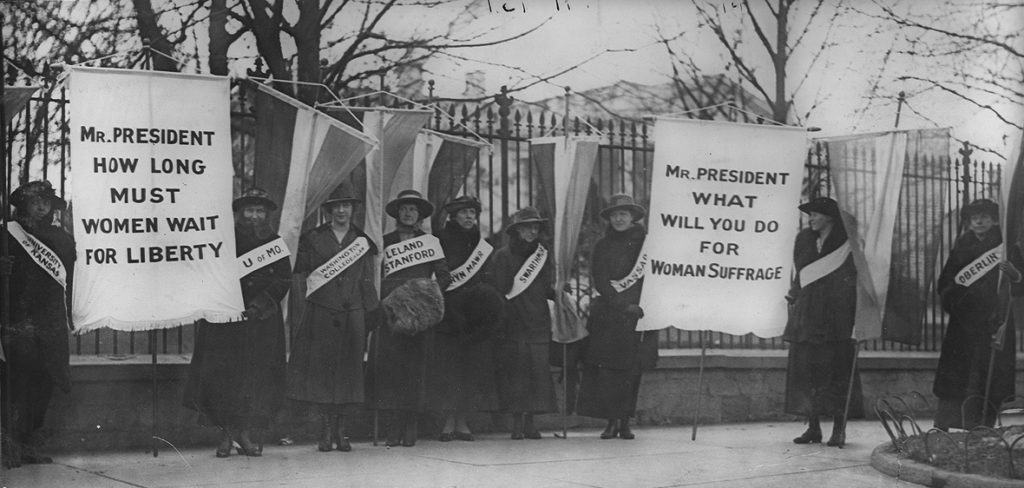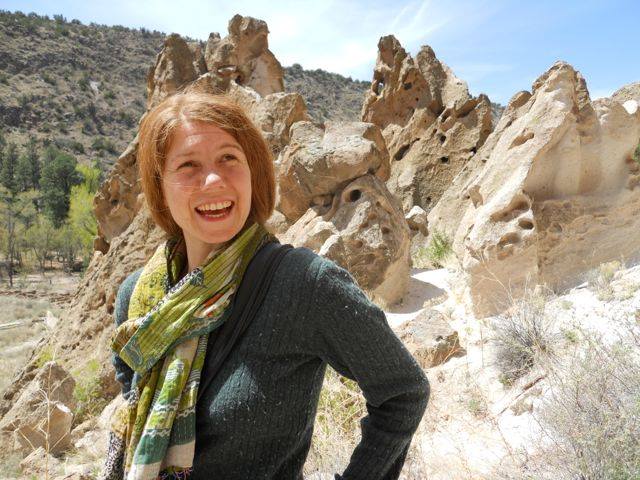
November 14th, 1917, is known as the “Night of Terror”. During the women’s suffrage movement, thirty-three nonviolent demonstrators were sent back to prison for participating in the Silent Sentinel protests in front of the White House. They had all served time before, experiencing the horrible conditions of the workhouse.
In his book, “Nonviolent Lives“, Ken Butigan describes the conditions that suffrage leader Alice Paul encountered during her earlier arrest: “On October 20th, Alice Paul was arrested and sentenced to seven months in prison. She, like many of the other women, was sent to the Occoquan Workhouse, where she was placed in solitary confinement with nothing to eat but bread and water. When she grew weak she was dispatched to the prison hospital, where she began a hunger strike that other women joined. She was remanded to a psychiatric ward and threatened with being sent to an insane asylum. She was force-fed and subjected to systematic sleep deprivation.”
When the thirty-three women arrived at the Occoquan Workhouse on November 14th, the head of the prison greeted them with the brutalization that became known as the Night of Terror. Wikipedia offers the harsh details, “a group of 33 returning prisoners, including at least one 73-year-old woman, were greeted by W.H. Whittaker and many prison guards wielding clubs. W.H. Whittaker ordered the nearly forty guards to brutalize the suffragists. They beat Lucy Burns, chained her hands to the cell bars above her head, then left her there for the night. They threw Dora Lewis into a dark cell and smashed her head against an iron bed, which knocked her out. Her cellmate, Alice Cosu, who believed Lewis to be dead, suffered a heart attack. According to affidavits, guards grabbed, dragged, beat, choked, pinched, and kicked other women.”
The newspapers covered the story of the brutalities, which angered many Americans and led to greater support for the women’s suffrage movement. Midway through their sentences, the women had a court hearing on a number of charges, but the Night of Terror was not discussed. Ultimately, a decision by the courts declared that every one of the women suffragists who picketed the White House was illegally arrested, illegally convicted, and illegally imprisoned. The experiences of the suffragettes and their determined resistance to the brutality and inhumane conditions of the prison led to an official investigation.
The actions of the women are just one of the many examples of prison organizing that have occurred throughout US history . . . and continue to occur today. While outbreaks of violence and violent revolts are more widely known to the general public, nonviolent strikes, hunger fasts and a variety of other tactics have been used to achieve a range of demands against human rights violations, brutality, high service charges, injustices, and low wage work programs. A recent prison labor strike launched in September 2016 objected to both labor work programs and the mass incarceration system in general. As you can see, if history repeats its negative side, then we who believe in justice and peace must also learn the tactics of the past in order to effectively pair them with contemporary knowledge so that we can organize effective campaigns for justice.

This article is from Rivera Sun’s book of nonviolent histories that have made our world. Click here for more information.
______________________________________
Rivera Sun is a change-maker, a cultural creative, a protest novelist, and an advocate for nonviolence and social justice. She’s a love-based revolutionary and the author of The Dandelion Insurrection, The Way Between and ten other fiction, non-fiction and poetry books. Her essays and writings are syndicated by Peace Voice, and have appeared in over a hundred journals nationwide. Rivera Sun speaks and facilitates workshops in strategy for nonviolent change across the country and around the world. She connects the dots between the issues, shares solutionary ideas, and inspires people to step up to the challenge of being a part of the story of change in our times. www.riverasun.com
Photo Credit: Silent Sentinels picketing the White House. Public Domain, https://commons.wikimedia.org/w/index.php?curid=790966